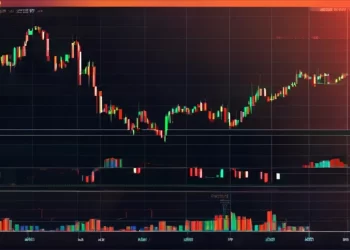Ryan Berckmans, an experienced investor, engineer, and member of the Ethereum community, has issued a dire warning to the community about the possibility of a catastrophic failure of the Ethereum network if the upcoming Pectra hard fork does not include Ethereum Improvement Proposal (EIP) 7251, also referred to as “maxeb.” This proposal tries to fix a significant vulnerability in the network’s ability to handle increasing staked ETHs by allowing for a more substantial consolidation of validators.
A Dreadful Situation Regarding Ethereum
Berckmans took his worries to X (previously Twitter), stating, “EIP-7251 (“maxeb”) ought to be part of Ethereum’s next hard fork, Pectra. Without maxed included in Pectra, Ethereum risks lacking a practical defense against the potential for staked ETH% to reach 50% or more before a future hard fork following Pectra.” He highlights the gravity of the problem by pointing out the ramifications of inaction, “Well, without maxeb, the worst-case scenario is potentially catastrophic for Ethereum.”
EIP-7251 proposes to increase the maximum effective balance for validators from the existing restriction of 32 ETH to an unlimited amount. This tweak aims to alleviate the dangers associated with an unduly fragmented validator pool, which could, in turn, undermine the beacon chain’s reliability.
Berckmans’ explanation of the network’s technical difficulties highlights the need for such a measure: “Base layer experts advise that if staked ETH grows to ~50%+, that will result in severe-to-fatal beacon chain instability.” That wasn’t intended to have that many validators.
“I’m told that simply fixing the beacon chain to support 50%+ staked ETH natively is impossible for Pectra,” says Berckmans, going into further detail about the technical impossibility of changing the beacon chain to support a higher percentage of staked ETH within the timeframe of the Pectra hard fork. The investigation stage is still ongoing for a longer-term fix.
Implications Of “Maxeb”
The plan is a strategic improvement to lower the number of validators without undermining the network’s decentralized culture or changing its monetary policy, not just a band-aid solution. “EIP-7251 maxeb is essentially ready to go and accomplishes this goal of lowering the # of validators while not being a monetary policy or issuance change,” notes Berckmans.
He also worries that EIP-7251 might modify the network’s reward structure or favour large staking operators disproportionately, saying that “maxed does not change issuance or staking rewards.” Maxeb is not a shift in monetary policy. The “rich get richer” are not assisted by Maxeb.
Additionally, Berckmans draws attention to the operational advantages that maxeb provides, especially for staking operators that already oversee several validators: “Maxeb automatically and passively reinvests staking rewards, eliminating the need for new transactions to stake every 32 ETH of rewards. Additionally, by allowing staking operators to run a single validator rather than dozens or tens of thousands, maxed can reduce DevOps costs and complexity for staking operators.” These two factors provide the off-chain operational incentive to consolidate.
Berckmans urges immediate action, highlighting the critical decision for Ethereum’s future: “Omitting maxeb in pectra could lead to a disastrous situation. In this scenario, we might face the dilemma of either the beacon chain collapsing (which would break Ethereum) or having to implement a drastic emergency change to monetary policy (such as heavily cutting staking rewards) to reduce the number of validators. Let’s defend Ethereum by integrating maxeb in Pectra.”
Bitcoin And Ethereum Community War
Despite the technical justification behind EIP-7251, the proposal has attracted harsh reactions from the broader crypto community, notably among Bitcoin enthusiasts. Glassnode’s Lead On-chain Analyst, Checkmatey, provided a critical perspective, stating,
The question persists: why isn’t ETH seen as institutionally sound and resilient like BTC? A possible explanation lies in overlooking a critical risk factor – catastrophic failures. The irony is concerning: a proof-of-stake network designed for stability could become unstable under one key condition: too many people staking.
At press time, ETH traded at $3,770.


























